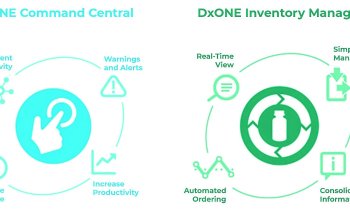News • Re-starting economy
Tackling ‘last mile’ of vaccine journey
Re-starting the global economy for billions of people will depend on successfully overcoming logistical challenges in the ‘last mile’ of a COVID-19 vaccine’s journey to immunisation stations, according to a new report.

Using cargo drones, mobile cold rooms, portable vaccine micro-chillers and other innovative means of delivering temperature sensitive vaccines to remote towns and villages may make the difference between life and death in low-income countries. Halting the spread of COVID-19 and safely re-connecting countries to international trade will also kick-start the global economy, but this only be possible with an effective rollout of vaccines to the billions of people who need them.
Universal vaccine access is already a major challenge in low-income countries, due to the lack of robust refrigerated cooling networks especially to remote communities. Mass vaccination for COVID-19 will need to deliver vaccines globally at scale and speed never before considered.
Supported by UK Research and Innovation (UKRI), University of Birmingham experts at the Centre for Sustainable Cooling are working with researchers at Edinburgh’s Heriot-Watt University, BRAC University, Bangladesh, and Bangladesh University of Engineering and Technology to design a blueprint for in-country COVID-19 vaccination cold chain design for Low- and Middle-Income Countries – using Bangladesh as a case study.
As part of the project, they have produced the report ‘Understanding the cold-chain challenge for COVID-19 vaccination’ which identifies, among other things, that:
- There is an urgent need to strengthen vaccine cold chains in low-income countries – particularly into rural and remote areas; It is estimated that nearly 3 billion of the world’s 7.8 billion people live in areas that lack temperature-controlled storage to deliver the COVID-19 vaccines.
- Existing vaccination must continue alongside COVID-19 programmes – some 80 million children may already miss vaccinations against preventable diseases due to the pandemic;
- Strengthening cold chains must not come at an environmental cost; this is a major opportunity to address gaps in the wider cold economy and use sustainable technology;
- A lack of qualified engineers will lead to long response times to equipment malfunctions and broken cold-chains.
- Waste management will be a major challenge; alongside vaccines, disposable syringes, Personal Protective Equipment and other vaccination supplies will require disposal; and
- High-income countries getting vaccines first would avoid 33% of preventable deaths, but equitable global distribution would stop 66% of such deaths.
Project developer Toby Peters, Professor of Cold Economy at the University of Birmingham, commented: “The COVID-19 pandemic is a major human tragedy rooted in a crisis of health, economy and social justice, but we must ask ourselves a key question: how do you kick-start a global economy without vaccinating the world? We can’t ‘build back better’ if lack of access to vaccination has condemned some countries to isolation because they remain COVID-19 hubs. We must reach everyone who needs a vaccine and the real challenge lies in overcoming that ‘last mile’. Cold-chains are energy intensive and rely on planet-warming refrigerants. Rapid expansion must not be based on environmentally harmful technologies and we are leading a fast-track research programme to design novel methods and instruments to support the cold-chain for COVID-19, but also to provide a lasting logistics legacy.”
Child vaccination programmes typically reach around 115 million infants each year, but the COVID-19 vaccine would need to be available to as many as 750 million people in Africa alone. The scientists are working in Bangladesh to create a blueprint to help ensure that medics can get a COVID-19 vaccine to everyone who needs it across the Global South.
Bangladesh has one of the world's largest pharmaceutical and vaccine industries, with a vaccination framework supported by Gavi, the Vaccine Alliance and the World Health Organisation (WHO), but, like many countries, still lacks the capacity to deliver unprecedented, fast-track mass vaccination.
Co-Investigator Professor Farzana Munshi, of BRAC University, commented: “Like many developing countries, Bangladesh must balance protecting its people and sustaining the economy. While we are experiencing positive economic growth in the short run, this may not be sustained if the pandemic prolongs. “Fear of unknown is an important factor causing lack of demand that can continue as long as the virus is with us. Availability of vaccine can remove this fear and stimulate economic activities. Rapid, efficient mass vaccination is the only way forward.”
Professor Ijaz Hossain, Dean of Engineering at BUET, added: “It’s vital that we understand and overcome the challenge of that last mile on the ground in countries like Bangladesh, which have remote rural populations. We must ensure that vaccines are available at every vaccination site and outreach channel. This is a major opportunity to use innovative, yet affordable, new technologies to create a lasting legacy from COVID-19 investment that could help to save millions of lives and support economic growth for years to come.”
Source: University of Birmingham
25.11.2020











